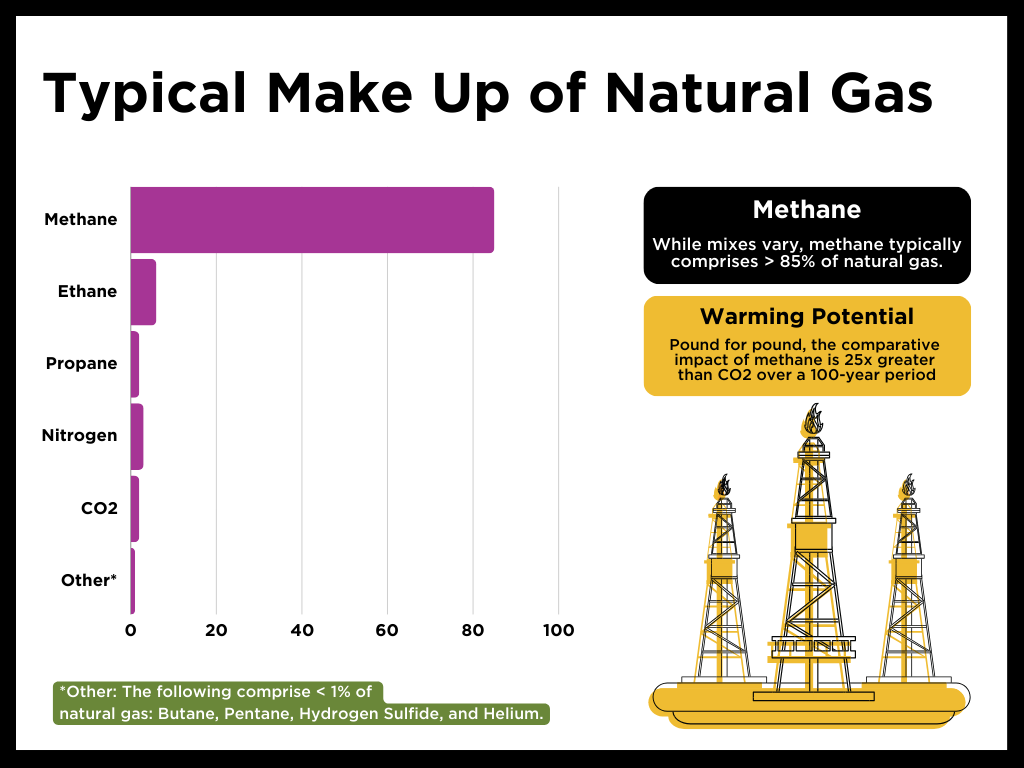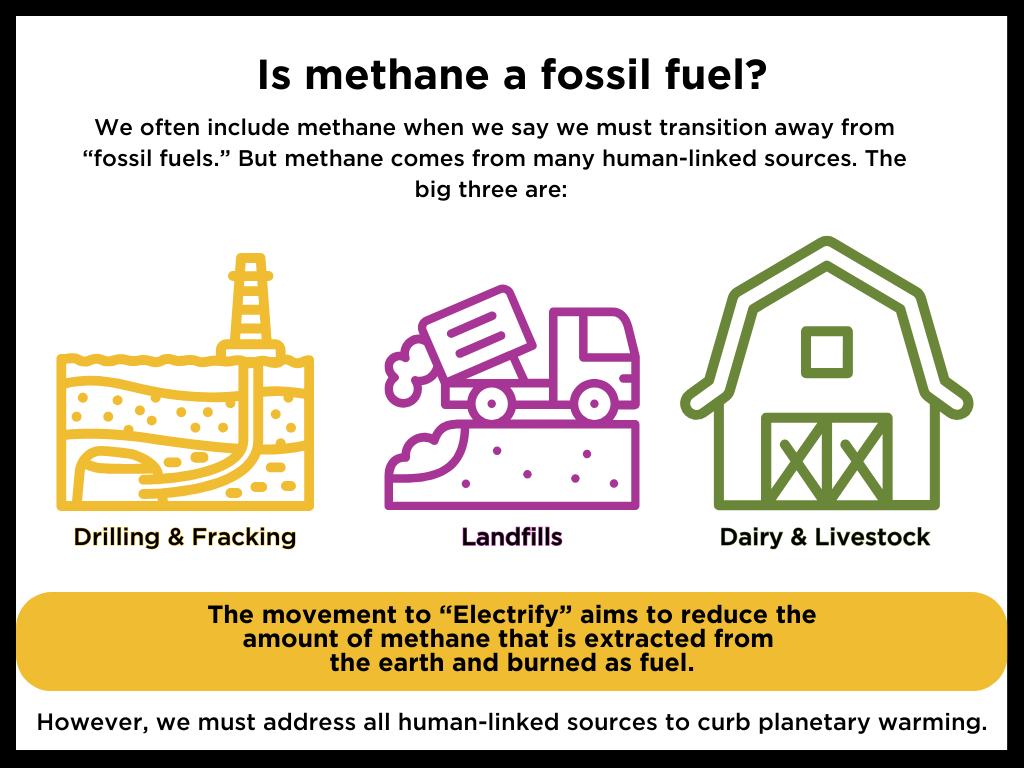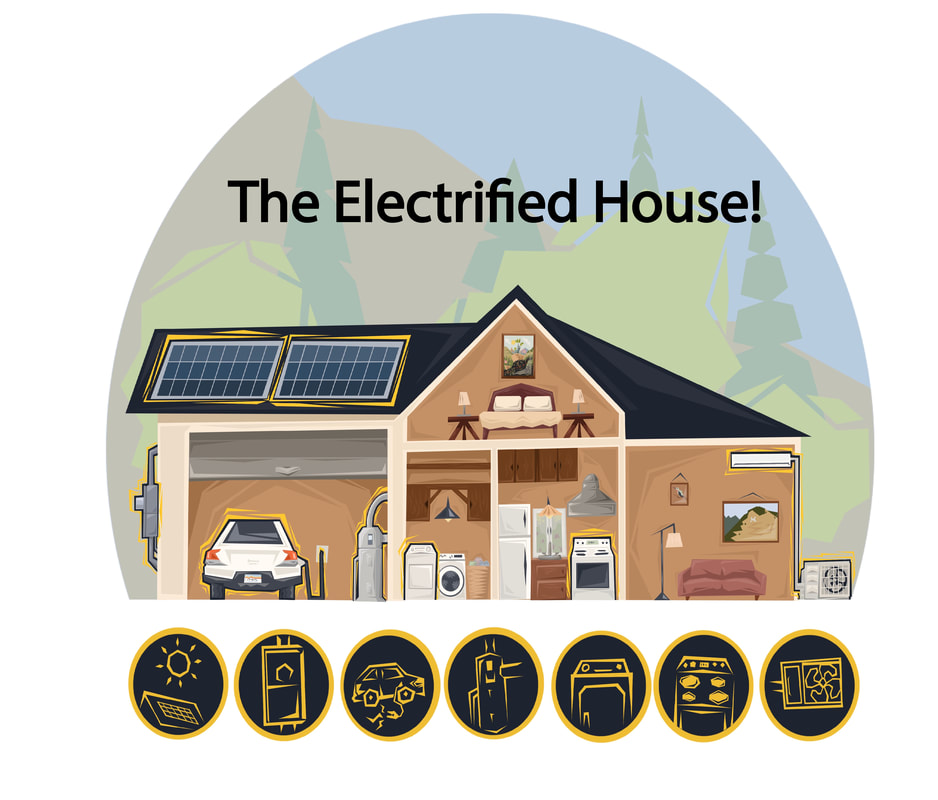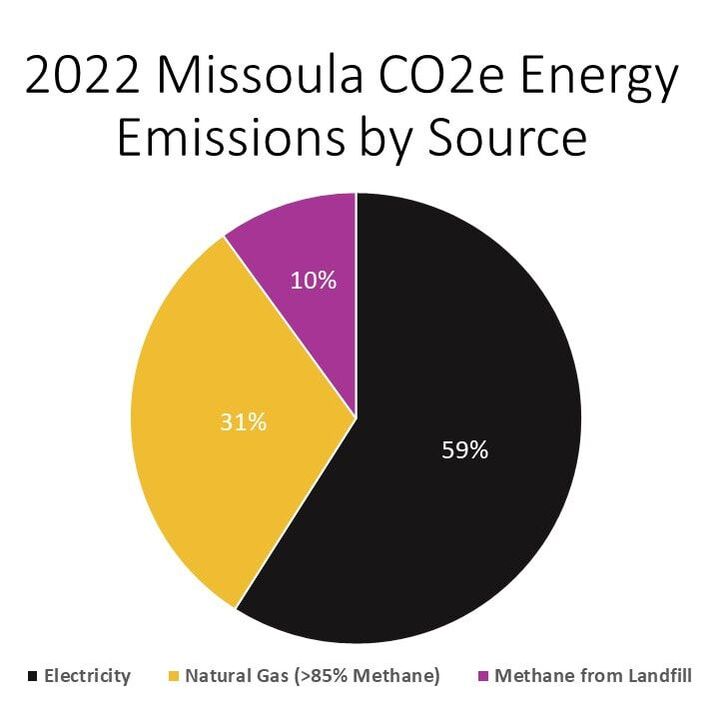First. What do we mean by "electrify"?Let's start by looking at our buildings. The systems and appliances we use to heat, cool, cook, do laundry, regulate water temperature - they're often either fueled by electricity or methane (aka "natural") gas.
The movement to "Electrify Everything" seeks to replace methane-gas-powered and fossil-fuel-powered systems and appliances with electric ones. (Learn what to electrify.) Okay, so why do we need to address "natural" gas?While mixes vary, natural gas is typically comprised of over 85% methane. And, in the short term, methane gas actually has a higher warming potential that CO2!
Why does methane matter for the environment & our health?Methane's lifetime in the atmosphere is much shorter than CO2, but it is more efficient at trapping radiation. Pound for pound, the comparative impact of methane is 25 times greater than CO2 over a 100-year period.1
Studies over the past decade have shown that:
Methane gas is, simply put, a pollutant with significant global warming potential. It must be addressed and a great place to start is by removing it from our buildings. The Local MovementElectrification fits into many local efforts to address climate change and build resiliency:
CLIMATE READY MISSOULA
Climate Ready Missoula is a collaborative plan to build a healthy, just, resilient Missoula County that is adapted to climate stressors here and coming. The plan seeks to improve the built environment so that residents and businesses have clean indoor air, are not "energy burdened" (meaning paying too much for energy), and can stay comfortable in winter and summer. As we learn more about the health risks from methane gas appliances and as we prepare for hotter and smokier summers, we know that an "electrified" Missoula is a more resilient Missoula. Learn more about how our Electrify campaign supports a number of Climate Ready Missoula's goals & strategies by reading the plan. MISSOULA'S 100% CLEAN ELECTRICITY RESOLUTION
In 2019, Missoula County Commissioners and the Missoula City Council adopted a joint resolution that establishes the goal of 100% clean electricity for the Missoula urban area by 2030. To meet this goal, we’re working to simultaneously “green our grid” (iow, replace electricity generated from polluting sources with clean electricity). Coupled with simultaneous efforts to electrify buildings, transportation, and parts of heavy industry, this clean electricity resolution can eventually drive reductions in Missoula's greenhouse gas emissions, providing a real opportunity to reduce our contribution to climate change and to build a just and thriving clean-energy economy and healthy community. LOCAL GOVERNMENT GHG REDUCTION GOALS
Both the City of Missoula and Missoula County have goals of carbon neutrality for internal government operations. The City has a plan to be carbon neutral for municipal operations by 2025; the County by 2035. COMMUNITY CLIMATE SMART ACTION PLAN AND GOAL
The Community Climate Smart Action plan was crafted by community stakeholders and endorsed by the late Mayor Engen. Electrify Missoula supports a number of the goals and strategies within this plan, especially the goal of carbon neutrality for the Missoula area by 2050. |
The Electrify MovementCampaigns to "electrify everything" are ramping up across the world. With global energy demand projected to increase by nearly 50% over the next 30 years, the urgency to transition away from burning pollutants is greater than ever. We can meet our increasing energy needs with clean electricity!
Although our electric supply is still powered by fossil fuels to varying degrees (in Montana, NorthWestern Energy’s electric supply is ~ 65% clean, Missoula Electric Co-op’s is ~95%), there are amazing opportunities to bring in more renewable energy and "green the grid." (Go solar!) Take A Deeper DiveNATIONAL VOICES
Here are some of conversations happening nationally:
WEBINARS
Electrify Now's 5-part Webinar Series:
Climate Smart Missoula: |
Beyond: How electrifying everything fits into the larger picture
Electrification is part of a larger effort to decarbonize the built environment and to rethink how we get from place to place (aka electric vehicles are one solution, but we still need to invest in multimodal transportation options). The same thinking goes as we move to green the grid and think about more sustainable building materials.
Become part of the larger movement by learning more about Missoula's Building(s) for the Future program, Climate Ready Missoula, and Climate Smart Missoula's work.
Become part of the larger movement by learning more about Missoula's Building(s) for the Future program, Climate Ready Missoula, and Climate Smart Missoula's work.








